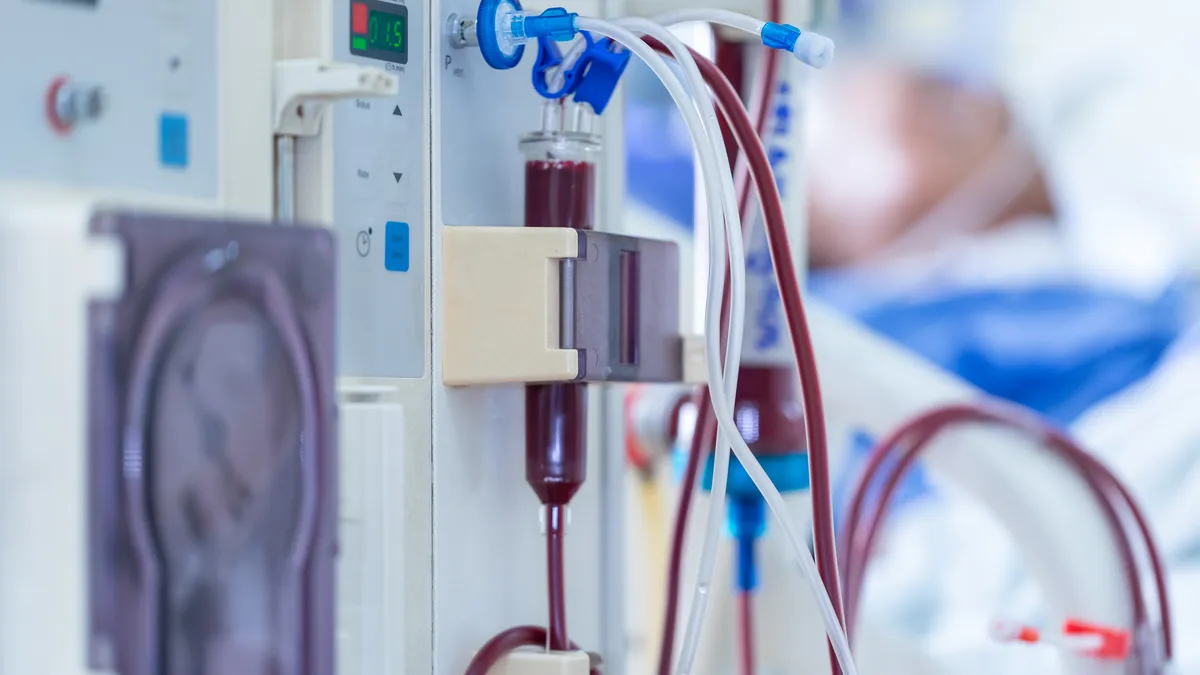Senseonics, a company making an implantable glucose sensor, is working to develop a version of its device that can be worn for one year. The firm currently has Food and Drug Administration approval for a 180-day continuous glucose monitor (CGM). Ascensia Diabetes Care is the exclusive distributor of the product through a collaboration the companies struck in 2020. Most other CGMs on the market last for about 10 to 14 days, although Senseonics’ device requires daily calibration with fingersticks — an aspect the company hopes to change in its year-long version.
Senseonics submitted data to the FDA earlier this year for the 365-day sensor. It expects to bring the new device to market in the fourth quarter, and to double sales and the number of users in 2025. Senseonics also won iCGM designation, allowing its Eversense glucose monitor to integrate with insulin pumps as part of an automated insulin delivery system.
Brian Hansen, former chief commercial officer at insulin pump company Tandem Diabetes Care, joined Ascensia in February as president of CGM, a newly created role.
MedTech Dive caught up with Hansen to talk about his new role and aspirations for the implantable CGM.
This interview has been edited for length and clarity.

MEDTECH DIVE: Having worked for an insulin pump company, what is the significance of Eversense getting iCGM designation?
BRIAN HANSEN: It’s interesting being on the other side, because I was the one, for the last eight years, telling the Senseonics folks that we needed more volume and, clearly, they needed to get the iCGM designation.
Getting the iCGM designation is a true milestone for us. In my opinion, it does three things. First, it validates an elite performance of our CGM. There’s a high bar to be iCGM. We have hit that or exceeded that.
Second, it facilitates a faster pathway to approvals through the FDA. So now the pathway is the 510(k) versus premarket approval, and so you basically have cut the time in half when you submit updates or new sensors like the 365.
[Third,] this allows us to have meaningful conversations with the pump companies [like Tandem and Insulet]. Now that we have this, there’s a true pathway to integration.
What would a 365-day CGM allow Sensonics to do?
Senseonics has been working on this pipeline for a while. The 365 is exciting to us. We’re now about halfway through the FDA process.
We have two things going on right now at Ascensia. We’ve got to sell what we have. Sell the 180, get the insertions, get the reimbursement, the billing aspect, our distribution partners — get all those things as fine tuned as possible today, because 365, we hope, is going to stress the system a little bit. We expect an inflection at that point. We’re looking for a [fourth quarter] launch.
There's a lot that goes on with that, because the payers now have to pay for a full year of it versus a half year of it, when they’re used to paying for 90 days with Dexcom and Abbott.
You've got to work on the whole insertion process, because, quite frankly, we need more volume.
And then the calibration piece, having to do it daily [with the 180], compared to factory-calibrated CGMs that are out there, has always been a bit of a detractor. To be able to have an early period where we hope it’s simply fingersticks for a week or two and then weekly calibrations is a tremendous value proposition for us. That’s not approved yet. That’s what we did in the trial. That’s what we submitted. That’s what we hope for. We do believe that is going to be much better for patients.
Who is Eversense currently indicated for?
People 18 and above today, and it is for Type 1 and Type 2. We are seeing nice growth in the Type 2 segment today. We would also like to get an indication for [pediatrics], and that process is ongoing, but we’d like to take that age indication down from 18.
Who is using Eversense, and why do they choose an implantable CGM versus a disposable one?
The new to Eversense patients are fairly split. They come from other CGM companies because they’re having some challenges with current technology. The other half or so are coming to us “CGM naive.”
For those that were on the other products, it most likely has something to do with it not staying on, not lasting the full term, getting frustrated with the product for some reason. Our latex adhesive is very gentle on the skin. It’s taken off every day, thrown away. A new sticker is put on, and the transmitter is put over the top of it. It wears very easily, a little different than the adhesives on the other two [Abbott and Dexcom], and some people just have a different allergic reaction to it.
How is the CGM inserted? Who can do the procedure?
It has to be at a nurse or a physician level. There’s a very small incision made on the upper arm. It’s about a 10-minute process. It’s super easy to do.
Many physicians like to do it in-office. If it's a big endocrinology office, they typically do it in-office because there's a revenue stream associated with it and they have total patient care. With these nurse practitioner group individuals that we have, they’ll actually come to somebody’s home and do it.



















